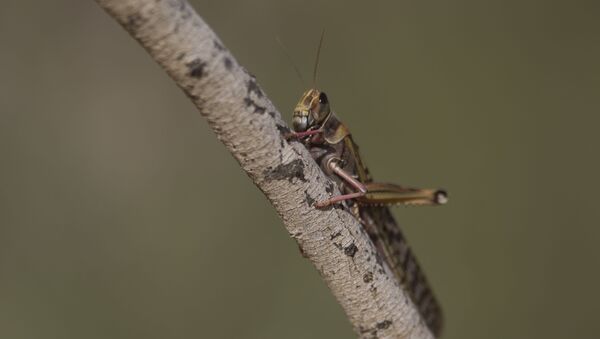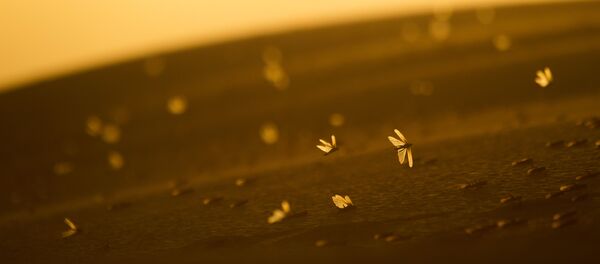Hordes of locusts have plagued the Italian island of Sardinia in what is described as the worst such invasion in decades, putting the local pasturelands and crop production in jeopardy.
The pests have ravaged 2,500 hectares of agricultural land in the central-eastern Sardinian province of Nuoro, according to local media.
Coldiretti, the largest association of farmers in Italy, has requested assistance from authorities at all levels to address the problem, but there are fears that nothing can be done against the already mature pests.
The group’s regional president, Leonardo Salis, said that preventative measures should be taken with a view to next season. They would include ploughing uncultivated land, to prevent the insects from laying eggs and breeding.
“They are devouring everything they encounter on their way and as a result are leaving the animals without pasture and in some cases are compromising the fodder harvest and damaging the bark of the plants," Salis said.
Cordiretti blamed the influx of locusts on a sudden rise in temperatures this month that followed an unusually cool May.
"We had droughts in 2017 and a lot of rain in 2018, the ideal climate for locusts to emerge from fallow land and then move to cultivated fields to eat," said Michele Arbau from Coldiretti Sardinia. "There is nothing we can do about it this year."
Local experts described the infestation as the worst in the area in 60 years.
Locusts are a common problem for the Middle East, Africa, and Asia. Iran, for instance, has fought swarms of desert locust – the world’s most dangerous migratory pest – in nearly 532,000 hectares of farming lands since January.
The UN Food and Agriculture Organisation (FAO) has warned that Iran may face another locust breakout in mid-June if it doesn’t get the situation under control.



